NOTE: For previous parts in this video series see: #47, #46, #45, #44, #43, #42, #41, #40, #39, #38, #37, #36, #35, #34, #33, #32, #31, #30, #29, #28, #27, #26, #25, #24, #23, #22, #21, #20, #19, #18, #17, #16, #15, #14, #13, #12, #11, #10, #9, #8, #7, #6, #5, #4, #3, #2, and #1.
—
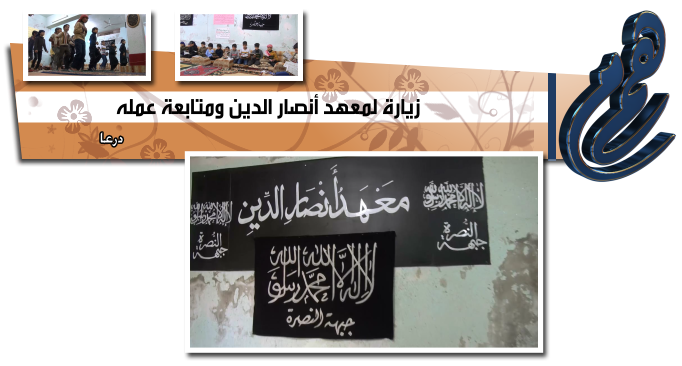
__________
To inquire about a translation for this video message for a fee email: [email protected]
Year: 2013
Hizballah Cavalcade: Khamenei’s Cannon: .50 Caliber Anti-Material Rifles & Shia Fighters in Syria
NOTE: For prior parts in the Hizballah Cavalcade series you can view an archive of it all here.
–
Khamenei’s Cannon: .50 Caliber Anti-Material Rifles & Shia Fighters in Syria
By Phillip Smyth
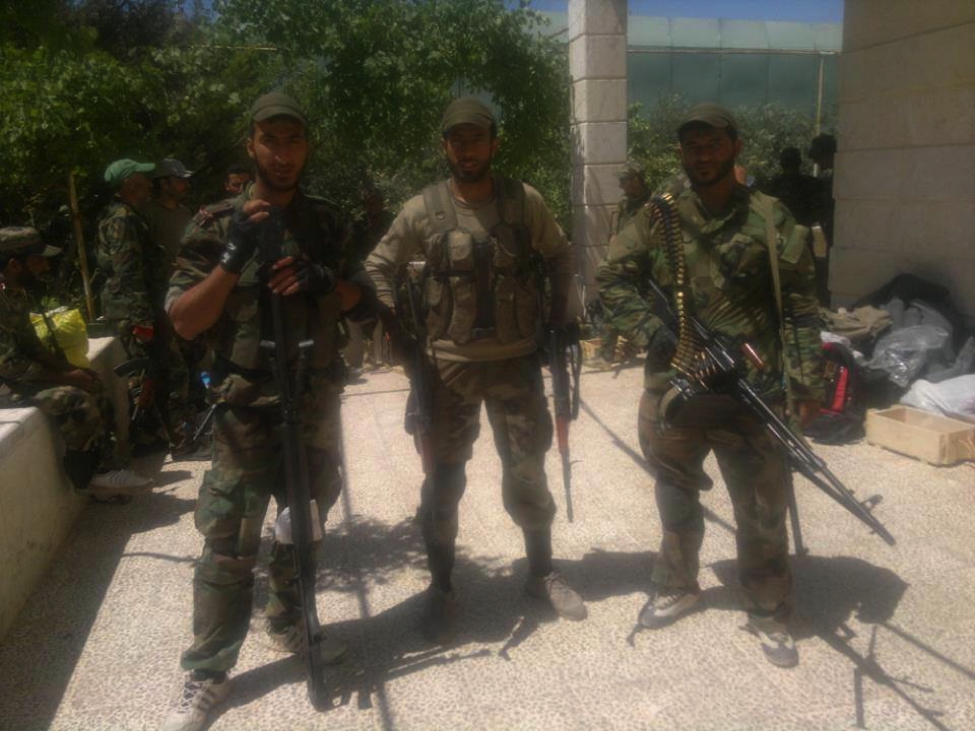
Figure 1: Combatants from Liwa’a ‘Ammar Ibn Yasir. The fighter on the left likely holds an Iranian-copy of the HS.50 rifle.
Since April 2013, around the same time Liwa’a Abu Fadl al-Abbas was first gaining broader exposure and name-recognition, another sub-trend started to appear in the photos showing Shia Islamist fighters in Syria. This trend remained minor and occasional. However, starting in October, there have been increasing examples of foreign Shia Islamist fighters being pictured with long range bolt-action anti-material rifles.[1]
It is possible these weapons were the bolt-action HS.50, .50 caliber (12.7x99mm) rifles produced by Austria’s Steyr Mannlicher. According to The Telegraph, 800 of the rifles were shipped to Iran in 2007.[2] However, according to the Brown Moses Blog, it is far more probable that these rifles are actually Iranian copies which were shipped to Syria.[3] Since the winter of 2012, pro-Iranian social media has also praised the Iranian-made copy of the rifle.[4] Still, serial numbers on the weapons are often hidden, making absolute confirmation difficult.
The original Steyr Mannlicher sale of these long-range weapons caused worries among British and U.S. policymakers and military personnel due to the fear they would be supplied to Iranian-created and supplied Shi’a Islamist “special groups” in Iraq. These groups included Asa’ib Ahl al-Haq and Kata’ib Hizballah. Both of these organizations are now sending forces to Syria.
Anti-material sniper rifles of this caliber have found a welcome place in Western military services. The U.S. military fields the M107 semi-automatic .50 caliber rifle as do a number of other militaries. In October, 2012 one of these weapons killed a Taliban member in Afghanistan from a distance of 2,475 meters.[5]
Presently in Syria, these types of rifles have been used by both rebels and pro-Assad forces. Nevertheless, the outfitting of highly organized foreign Shia fighter manned organizations may demonstrate a shift in tactics and training.
Groups using the rifle in Syria span the full spectrum of organizations backed by Iran. Lebanese Hizballah has been a primary poster of images with the weapon. Additionally, Iraq-based Harakat Hizballah al-Nujaba’s (a front for Kata’ib Hizballah and Asa’ib Ahl al-Haq) Syria-based front militias, Liwa’a ‘Ammar Ibn Yasir and Liwa’a al-Hamad have posted photos of their militants with the rifle. Iraq’s Badr Organization’s Quwet Shahid Muhammed Baqir Sadr and Kata’ib Sayyid al-Shuhada have posted their own images of their fighters with the HS.50 type rifle. Other Shia fighters from unnamed organizations have also been pictured with the weapon.
Films featuring Shia militia groups using the HS. 50 type rifles in combat in Syria have been extremely rare. Usually only photos are posted.
The first film showing Shia Islamist militias in Syria using the rifle was posted to Facebook and YouTube pages associated with the Badr Organization’s Quwet Shahid Baqir Sadr (BOQSBS), the group’s expeditionary unit in Syria. The BOQSBS has also been a main poster of high-quality images showing their combatants wielding these types of anti-material rifles. Around a minute of footage showing BOQSBS fighters using the weapon was inserted into a much longer film made to demonstrate the group’s activities in Syria (see below at minute markers 1:59-2:23).
Due to the high level of operational security employed by these groups, potential failures or successes of the rifle in combat are often not showcased. Operations using the rifle have also not been detailed on the many social media pages run by Iranian-backed Shia militia groups inside Syria. In fact, the rifle has rarely been named or described by Shia Islamist militia pages. Nevertheless, these rifles have become a regular feature in images featuring fallen fighters.
Such a capability, even if deliberately showcased for propaganda purposes, should be taken seriously by regional and global military forces. Iranian equipped and trained snipers, utilizing smaller caliber rifles, demonstrated a lethal efficiency during the Iraq War (2003). Their utilization of smaller caliber-wielding snipers (particularly using the SVD-type rifles) demonstrates a concentration on sniping tactics.
Some Possible Reasons Why the Rifles Are Appearing More
- Propaganda Purposes: Some of the photos of fighters holding the rifle appear to be posed images meant to showcase the size of the weapon (representing power) in comparison to the fighter. Additionally, since it is probably a copy, showing the rifle in operations overseas is a sign that Iranian-made weapons are of a high quality. Proxy organizations may also see the rifle as a symbol of advancement and as a sign they are comparable to first-world armies. The weapon may also be a sign to rebel groups that Shia militants have more advanced capabilities.
- General Incorporation into the Order of Battle: The rifle could have possibly become more prolific with increased foreign-manned Shia militia operations.
- Offensive Operations: Since the start of main offensives in October and increase in numbers of Shia fighters, it is possible the rifle has found more use and acceptance by fighters.
The Rifle & Its Shia Islamist Users
Lebanese Hizballah:
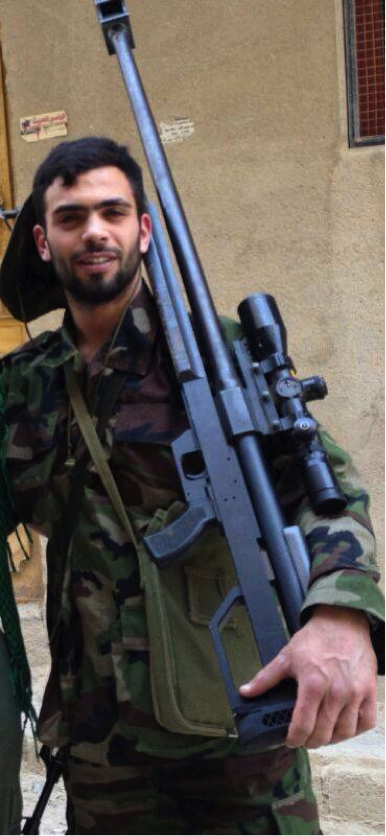
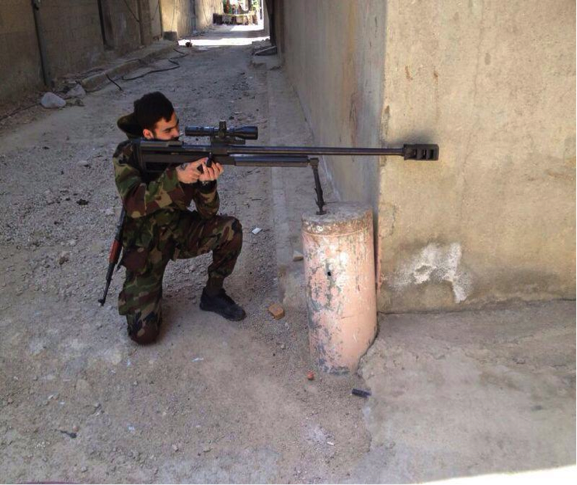
Figure 2: Lebanese Hizballah’s Ali al-Hadi Nuwn shown holding the weapon on his shoulder. (Left)
Figure 3: Another posed-photo of Lebanese Hizballah’s Ali al-Hadi Nuwn. In this picture he is taking aim with the .50 caliber rifle. (Right)
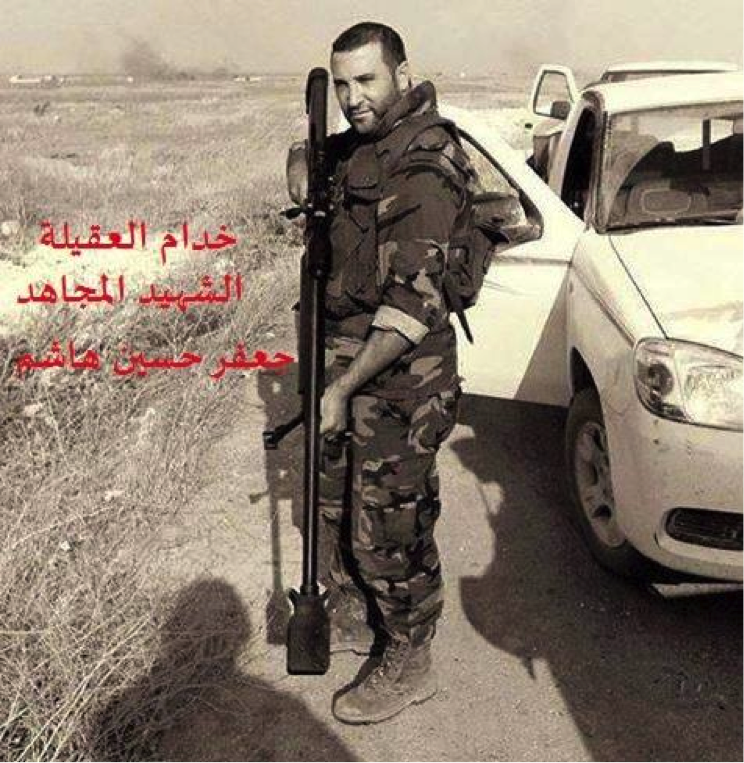
Figure 4: Hizballah commander Ja’afar Husayn Hashim with the rifle. He was reported to have been killed in Syria on November 1, 2013.
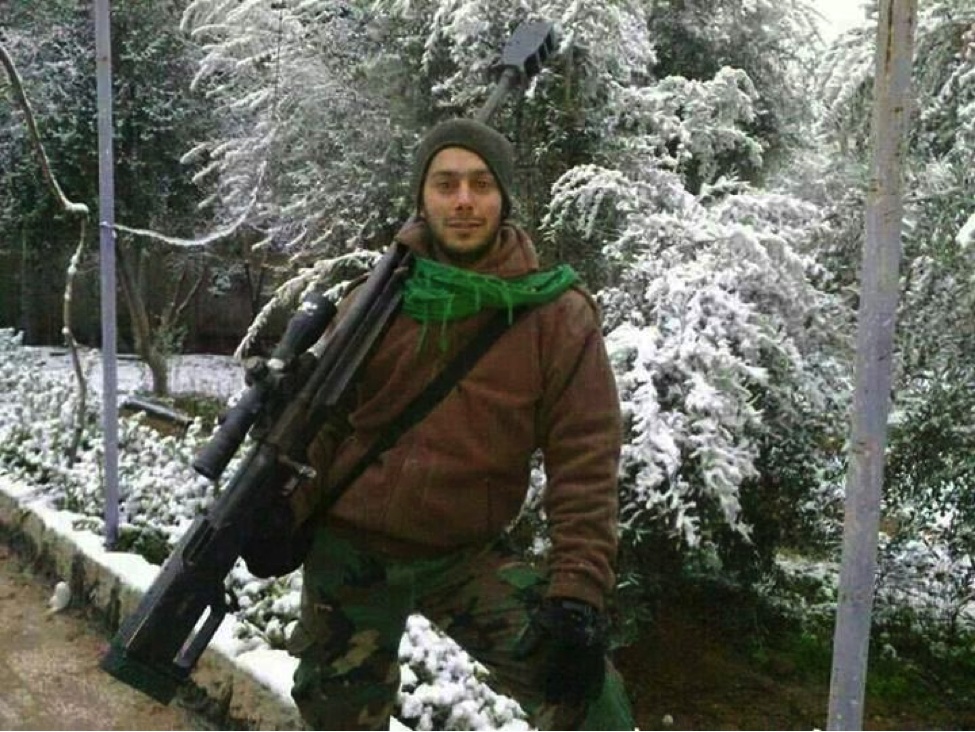
Figure 5: Hizballah’s Khadr Ahmed Matar, declared killed in Syria on December 2
0, is shown standing in the snow with the rifle.
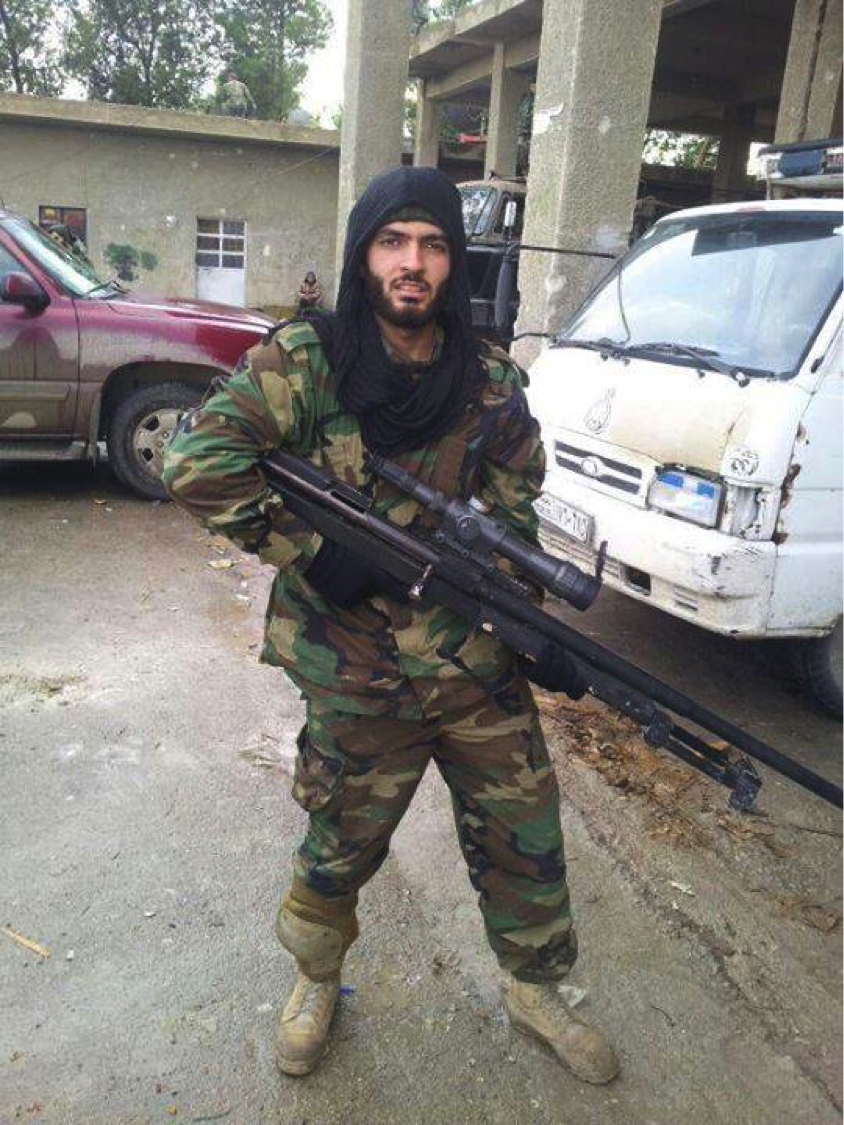
Figure 6: Qasim Ghamloush is shown holding the .50 caliber rifle. His death was announced by Hizballah on December 7, 2013.
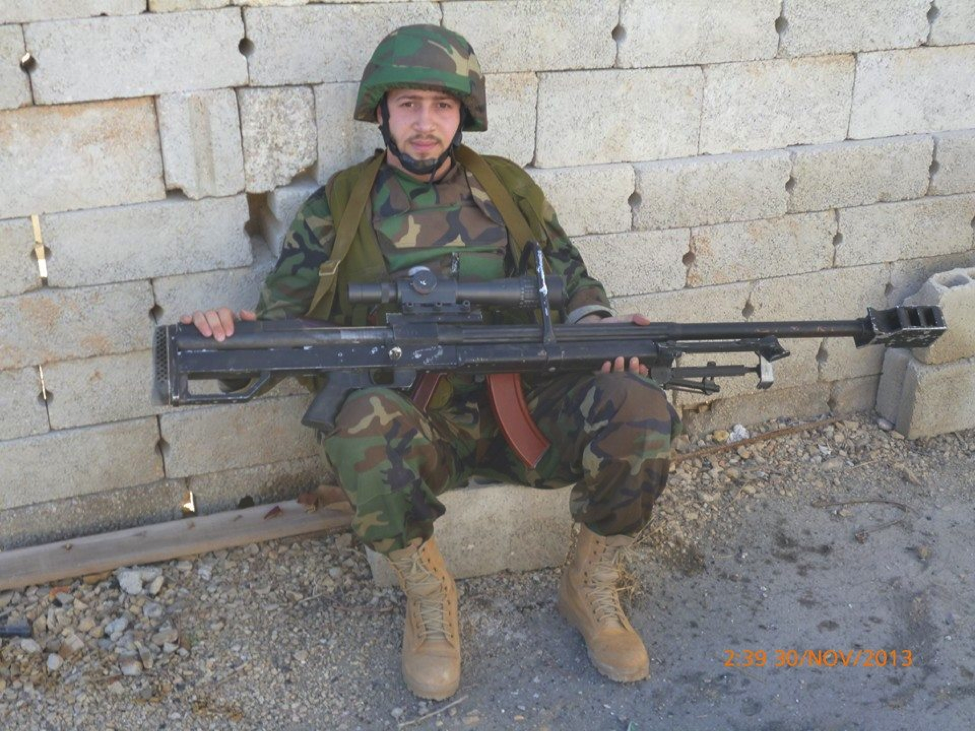
Figure 7: Ali Husayn Salah (A.K.A. Sheikh Hadi) is seen holding the rifle over his Kalashnikov-pattern weapon. Salah was also reported to have been killed in Syria on December 7, 2013.
Liwa’a al-Hamad:
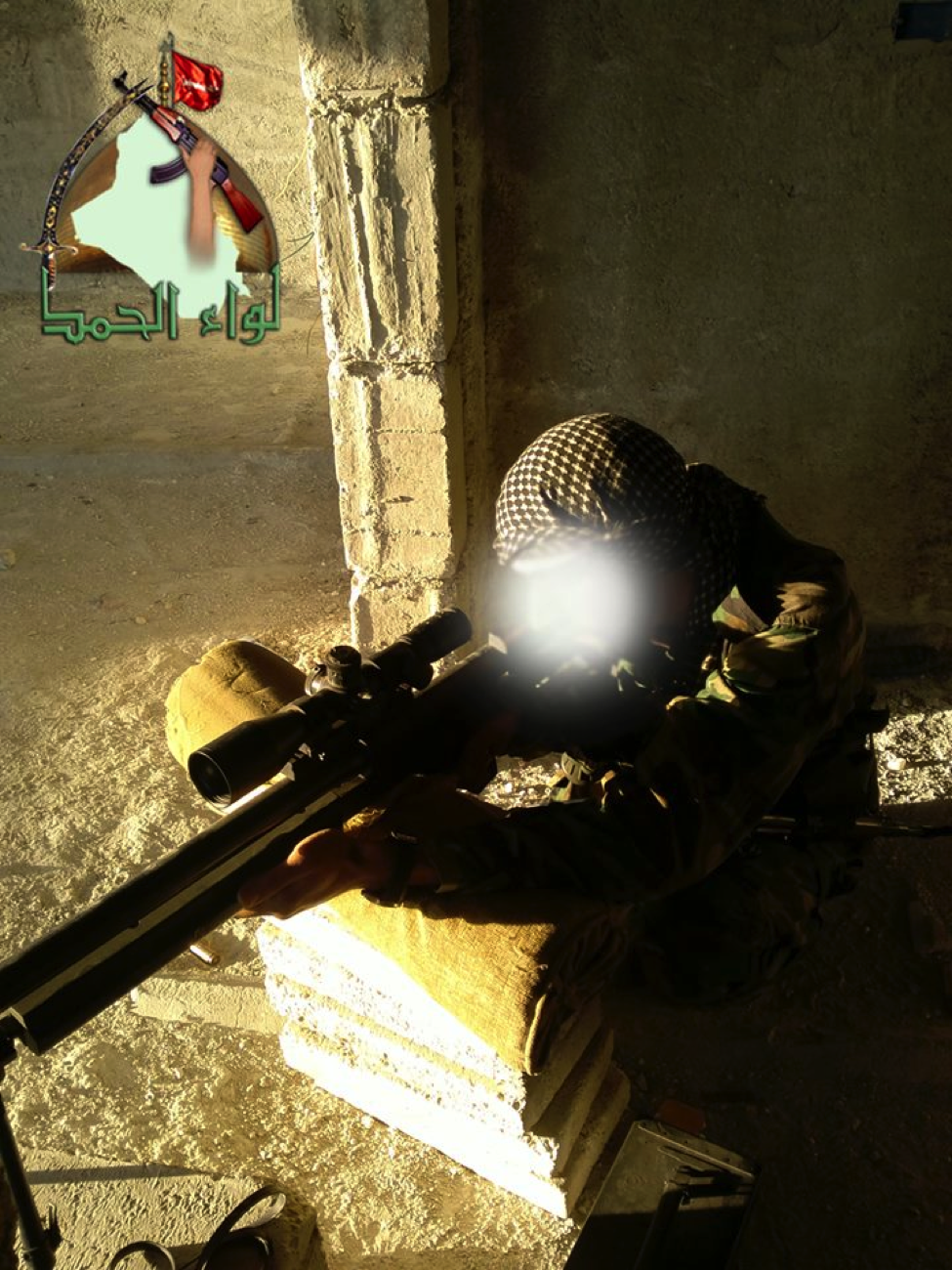
Figure 8: An October photo of a fighter from Liwa’a al-Hamad taking aim with the HS.50-type rifle.
The Badr Organization – Quwet al-Shahid Muhammed Baqir Sadr
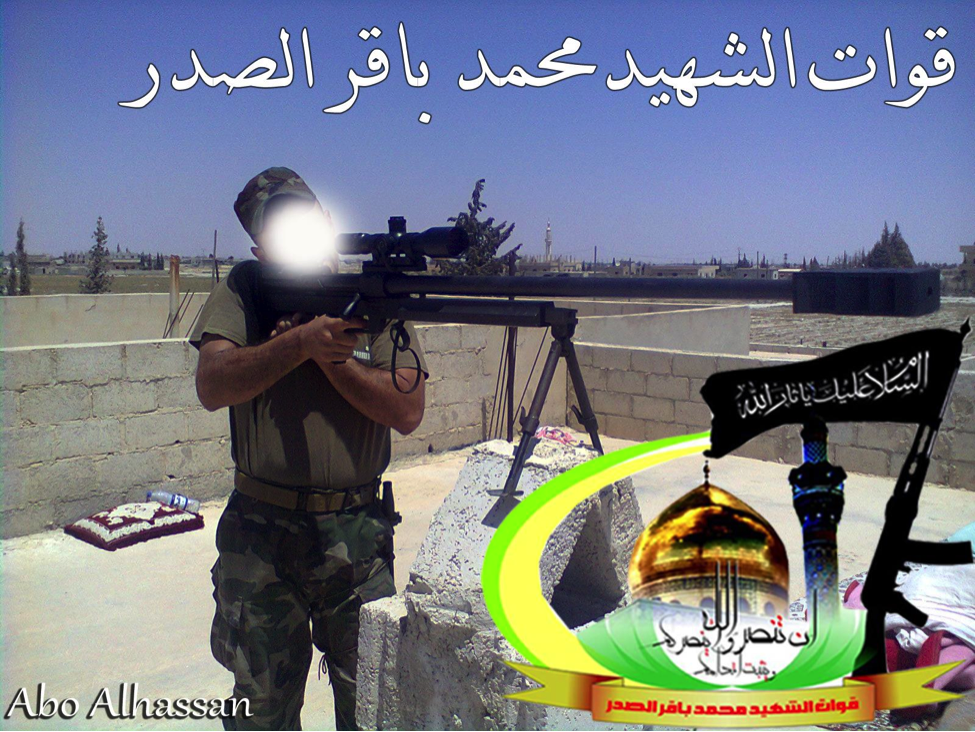
Figure 9: Following the announcement that the Badr Organization had created its own expeditionary force for Syria, this was one of the first photos they posted online.
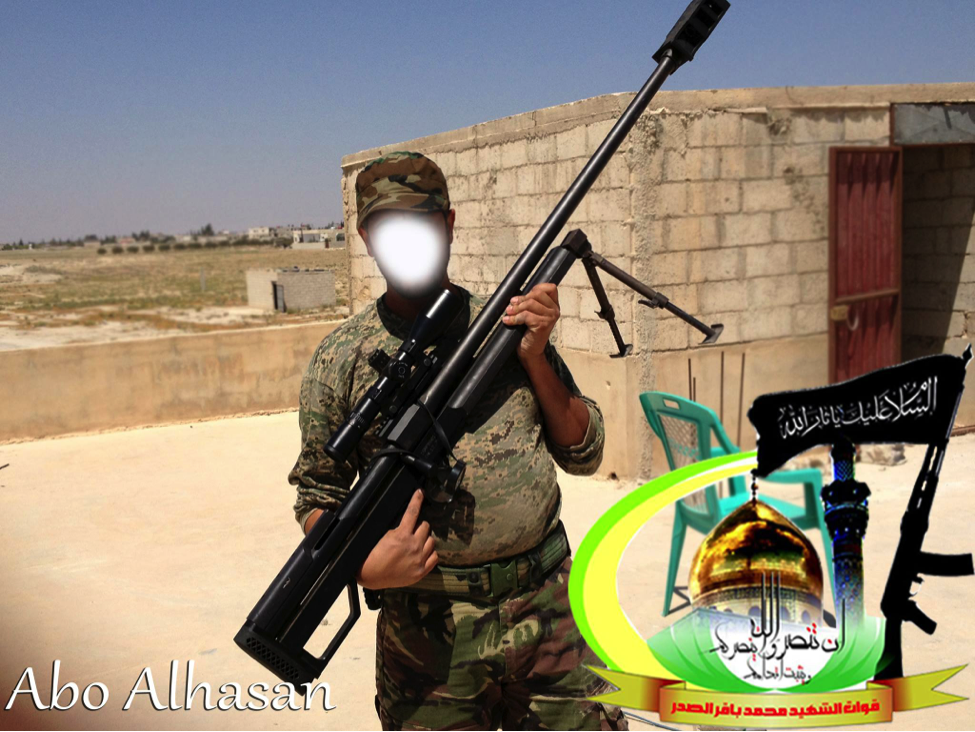
Figure 10: A Badr Organization-Quwet al-Shahid Muhammed Baqir al-Sadr is shown holding the HS. 50 type rifle.
Liwa’a ‘Ammar Ibn Yasir:
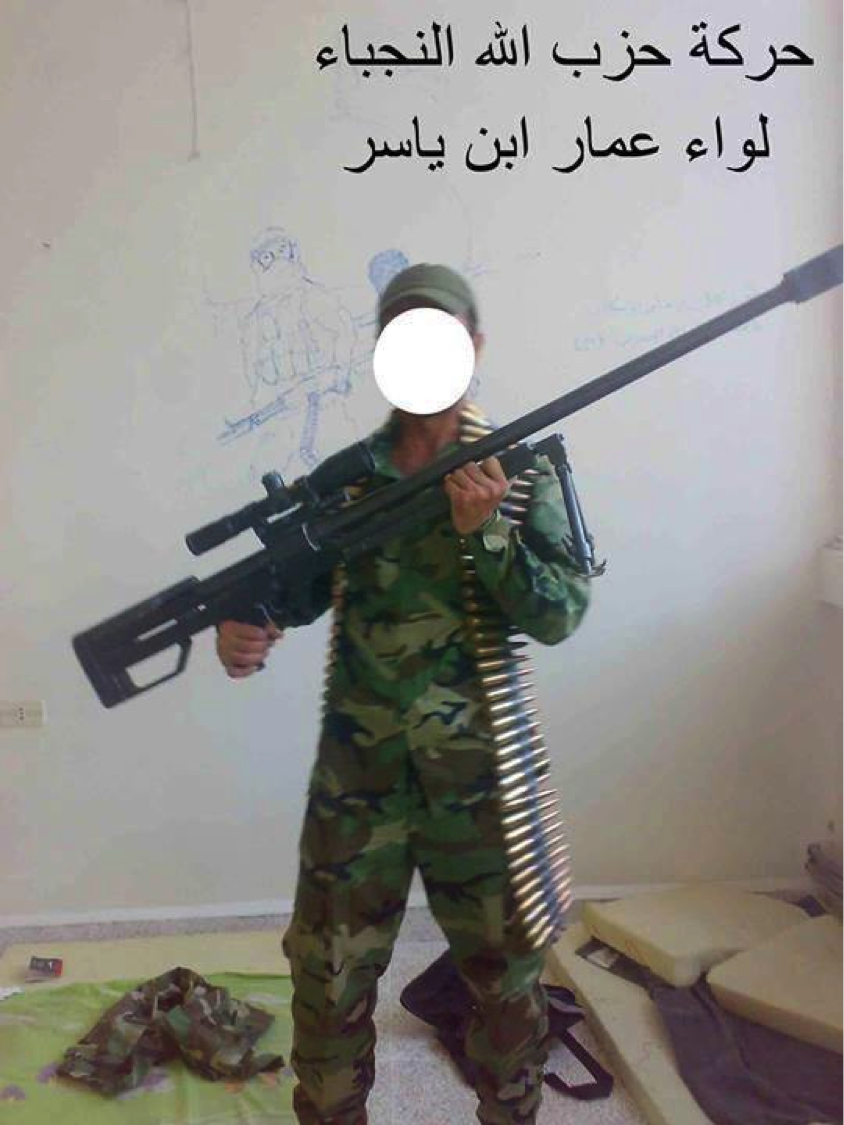
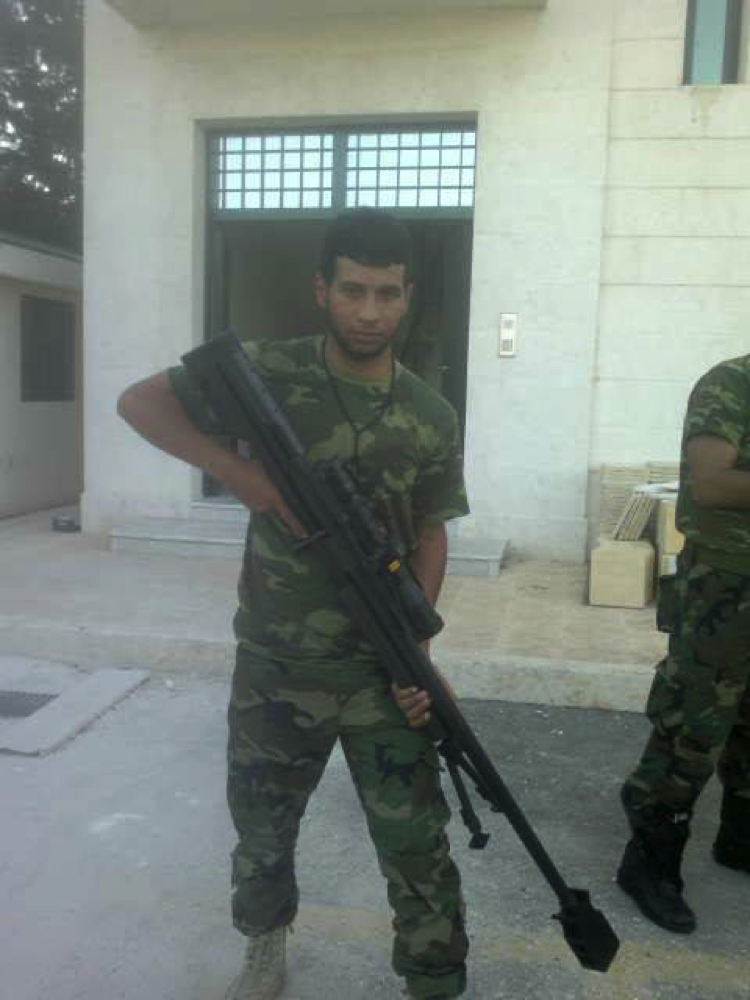
Figure 11: A commander from Liwa’a Ammar Ibn Yasir is seen holding the .50 caliber rifle.
Kata’ib Sayyid al-Shuhada:

Fighters from Other Groups:
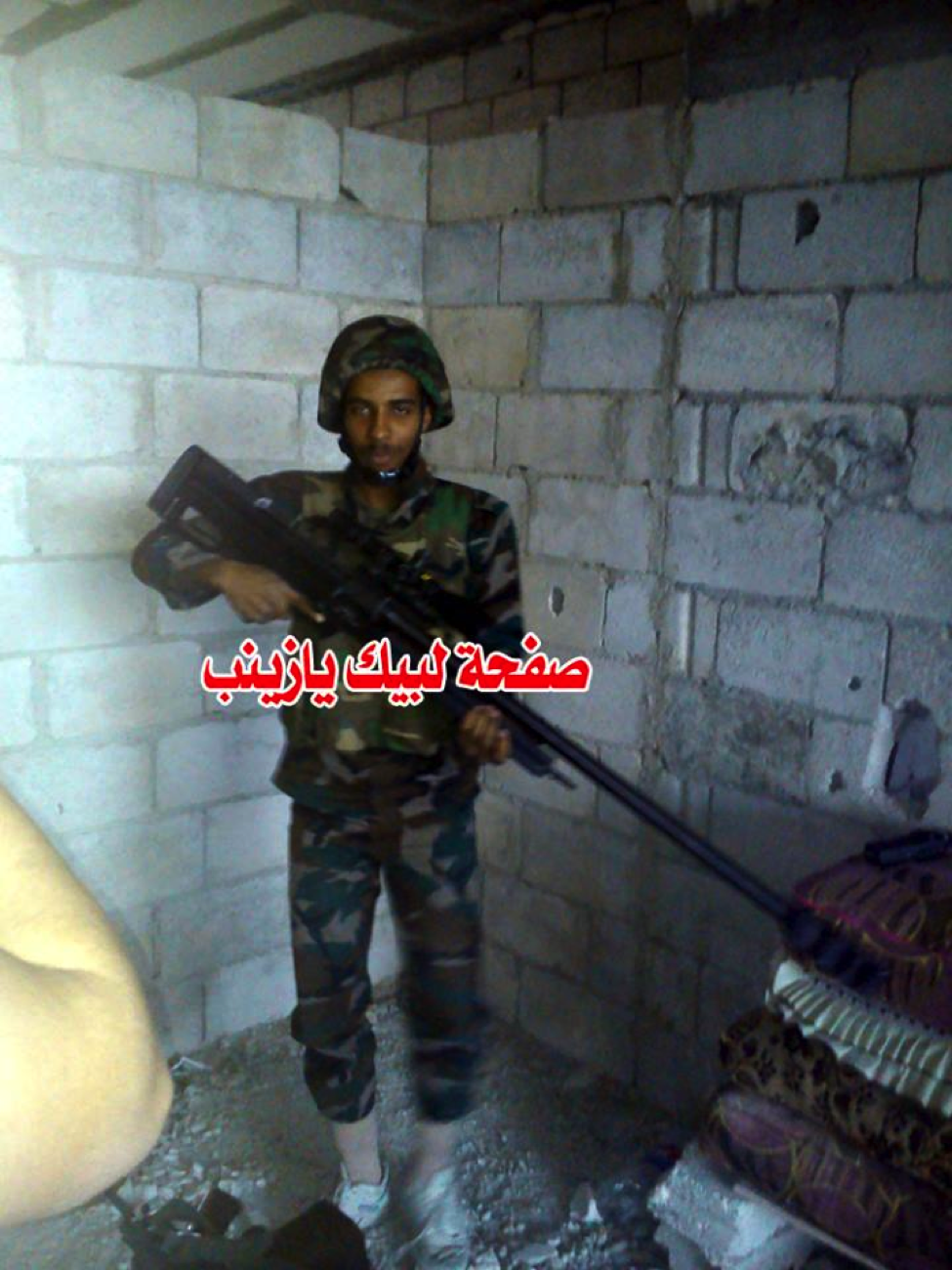
Figure 12: The Shia militia effort’s “first African martyr” (Muhammed Suleiman al-Kuwni) is shown holding the rifle.
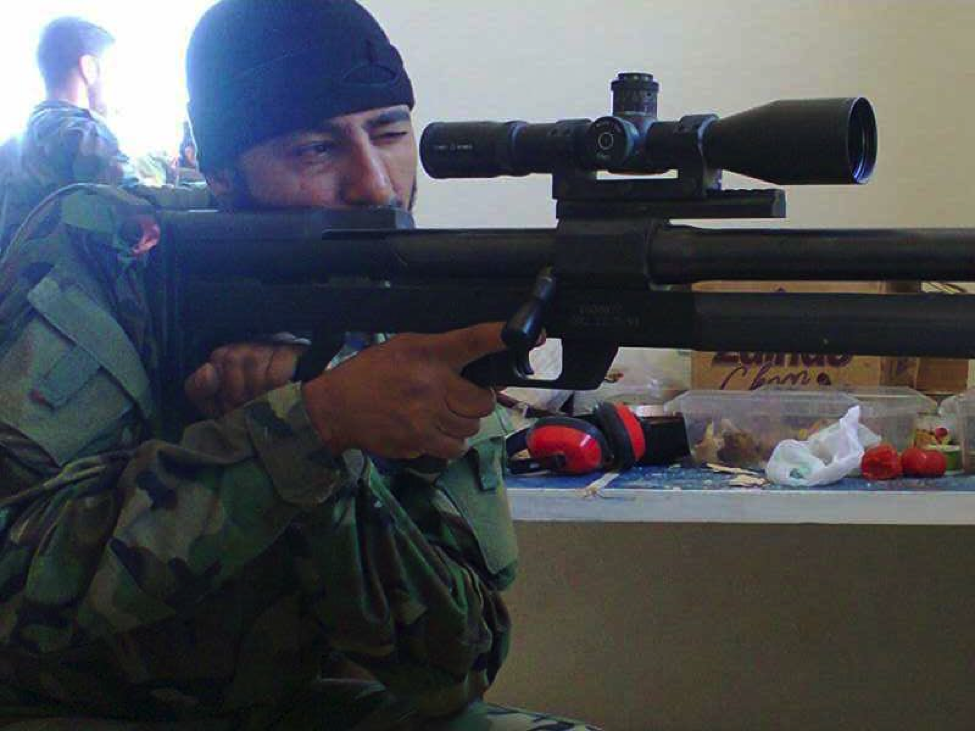
Figure 13: A fighter from an unnamed Shia Islamist militia (likely Liwa’a ‘Ammar Ibn Yasir) take aim with his rifle.
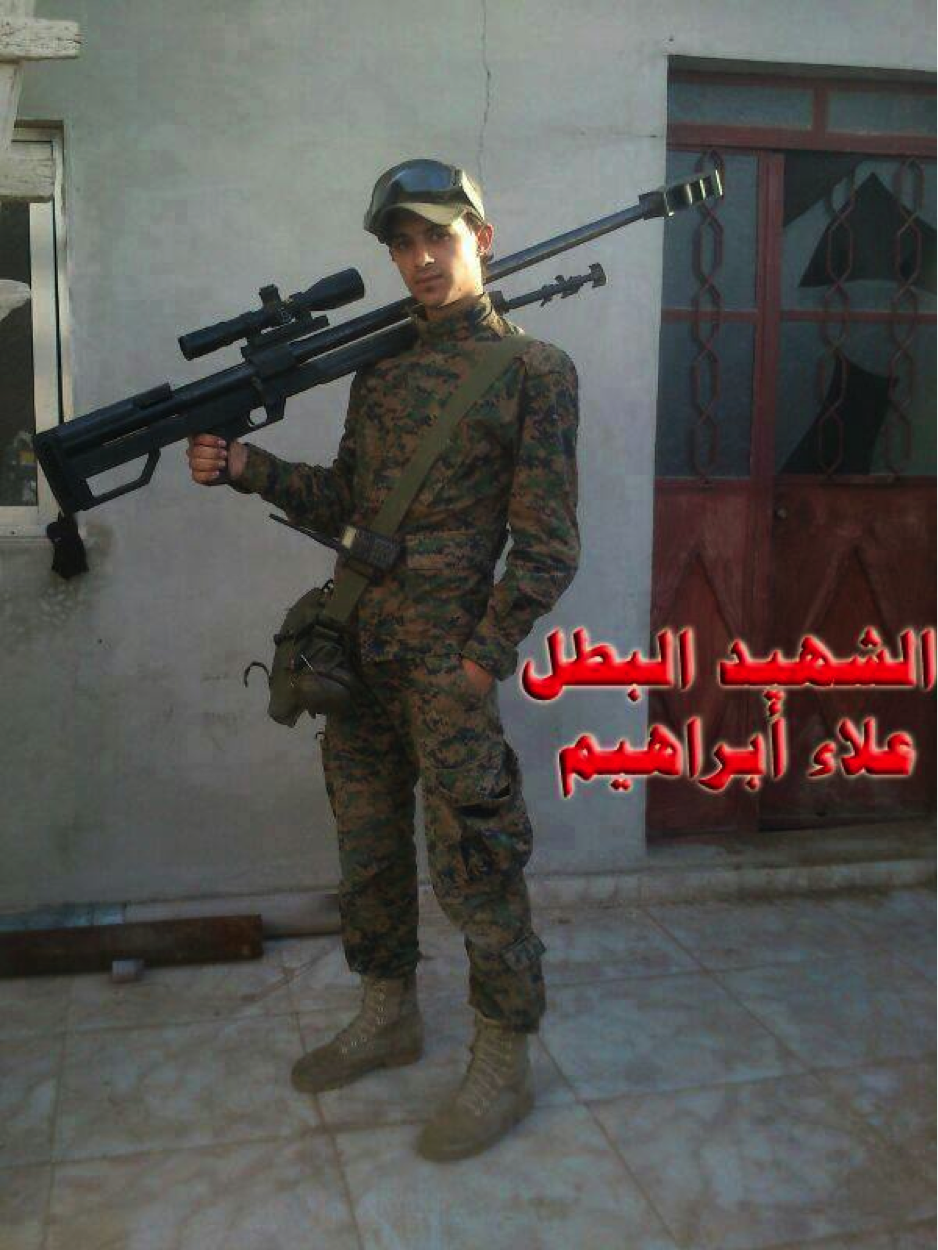
Figure 14: Alla’ Ibrahim (possibly from Liwa’a Zulfiqar), an Iraqi Shi’a fighter buried on November 30, 2013 holds the rifle over his shoulder.
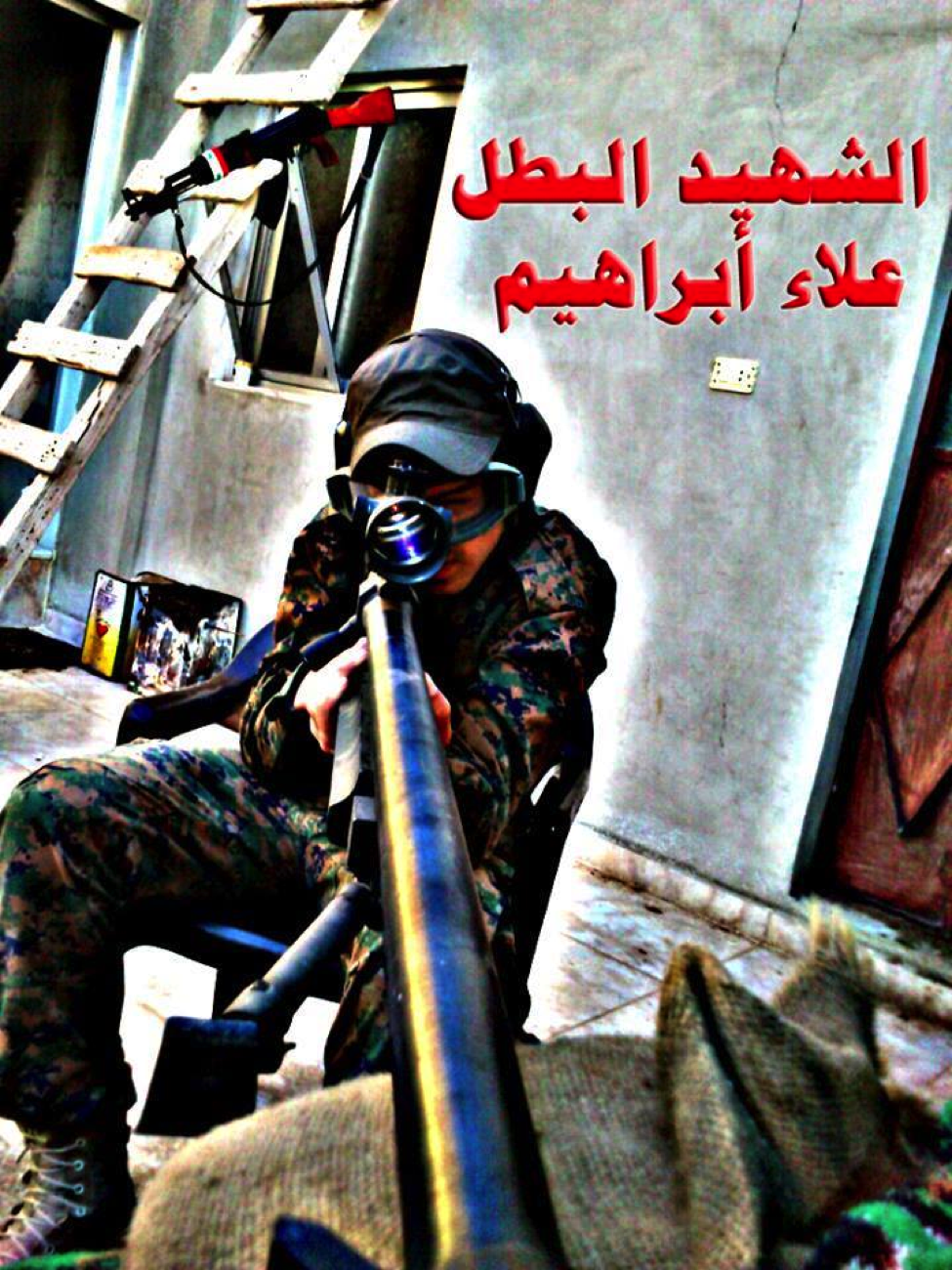
Figure 15: An edited shot of Alla’ Ibrahim shows him posting with the rifle.
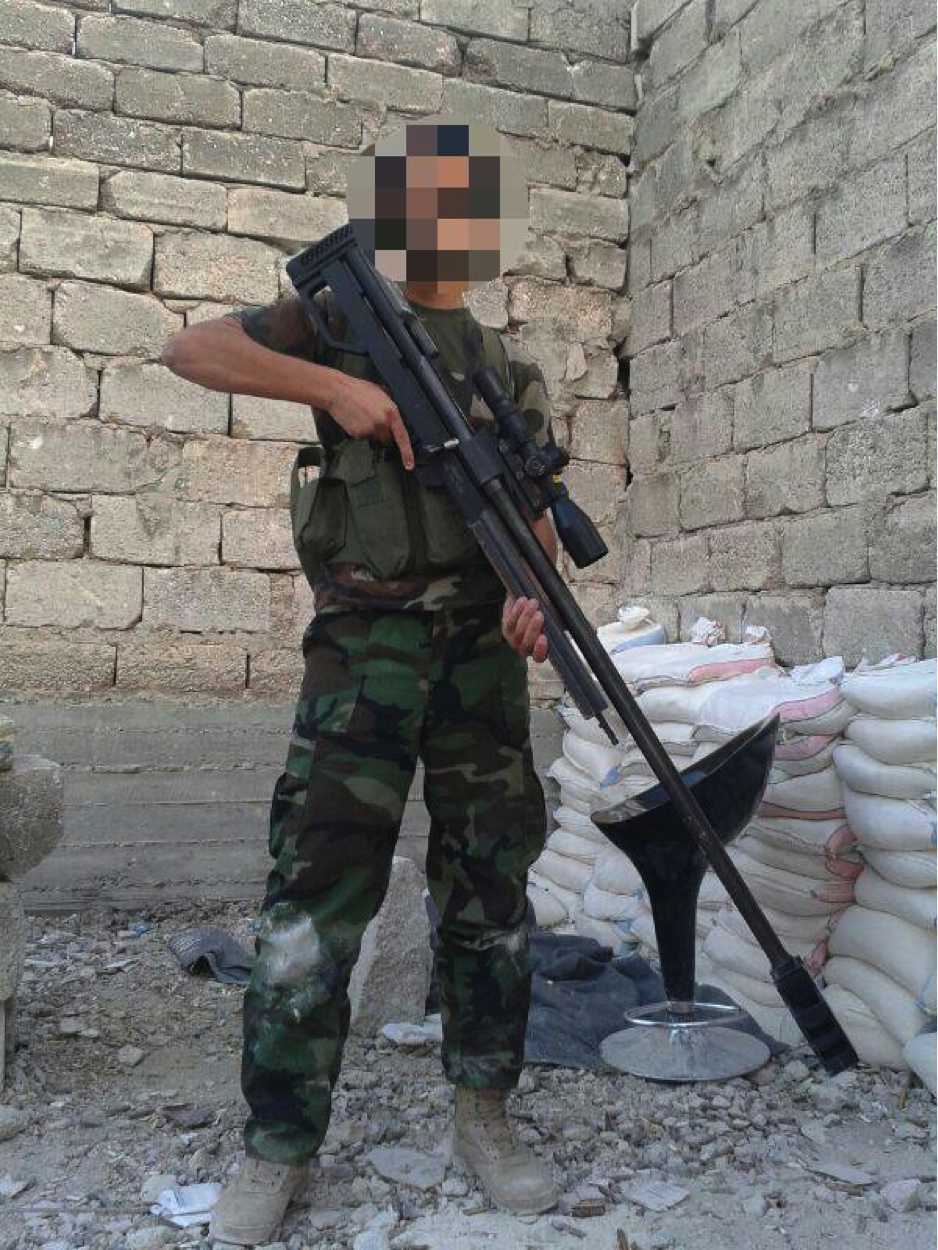
Figure 16: A Shia fighter from an unnamed militia group is shown with the HS. 50-type rifle.
[1] The Oryx Blog has an excellent post on HS. 50-type rifles in Syria: https://spioenkop.blogspot.com/2013/04/syria-and-her-hs50s.html. The post is from April 27, 2013 and pictures of Liwa’a Abu Fadl al-Abbas members with the rifle.
[2] See: https://www.telegraph.co.uk/news/worldnews/1542559/Iraqi-insurgents-using-Austrian-rifles-from-Iran.html
[3] See: https://brown-moses.blogspot.com/2013/04/anti-material-rifles-in-syria.html. See also: https://www.thefirearmblog.com/blog/2012/07/16/mysterious-iranian-50-cals-part-3/. This post by The Firearms Blog should also be read when assessing the rifle in question.
[4] See: https://www.facebook.com/permalink.php?story_fbid=477563188953409&id=174927625878471.
[5] See: https://www.dailytelegraph.com.au/news/opinion/taliban-remain-in-fear-of-lethal-strikes-writes-chris-masters/story-e6frezz0-1226504862496
al-I’tiṣām Media presents a new video message from the Islamic State of Iraq and al-Shām: “A Window Upon the Land of Epic Battles #39"
NOTE: For prior parts in this series see: #38, #37, #36, #35, #34, #33, #32, #31, #30, #29, #28, #27, #26, #25, #24, #23, #22, #21, #20, #19, #18, #17, #16, #15, #14, #13, #12, #11, #10, #9, #7, #6, #5, #4, #3, #2, and #1.
—
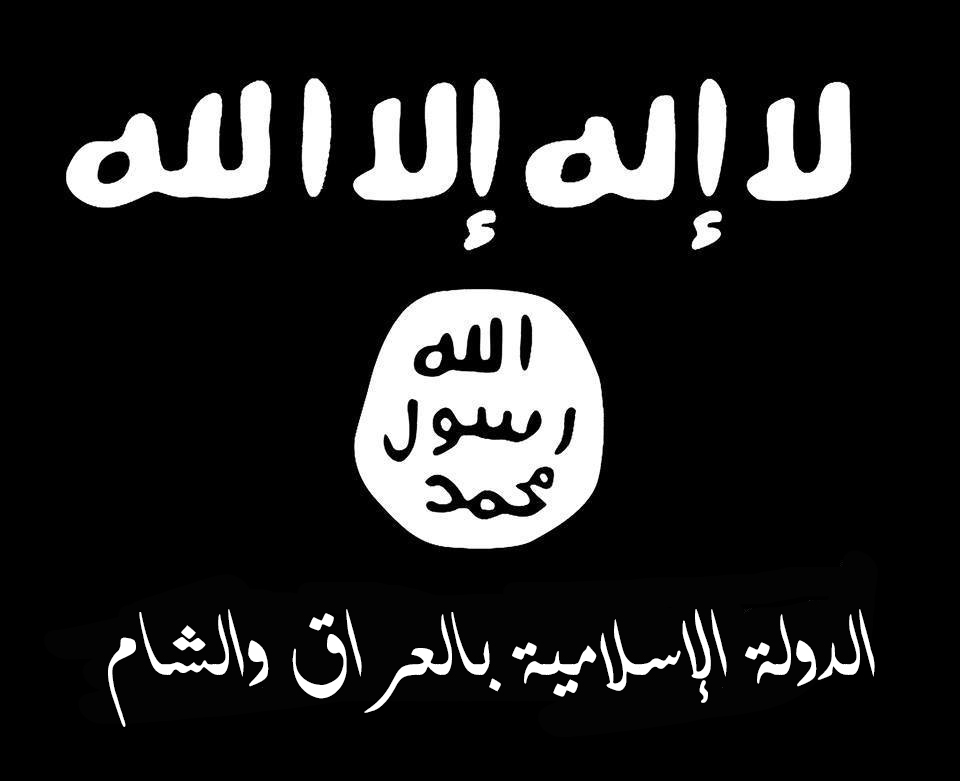
____________
To inquire about a translation for this video message for a fee email: [email protected]
al-Manārah al-Bayḍā’ Foundation for Media Production presents a new video message from Jabhat al-Nuṣrah: "Liberation of al-Kindī Hospital – Aleppo"
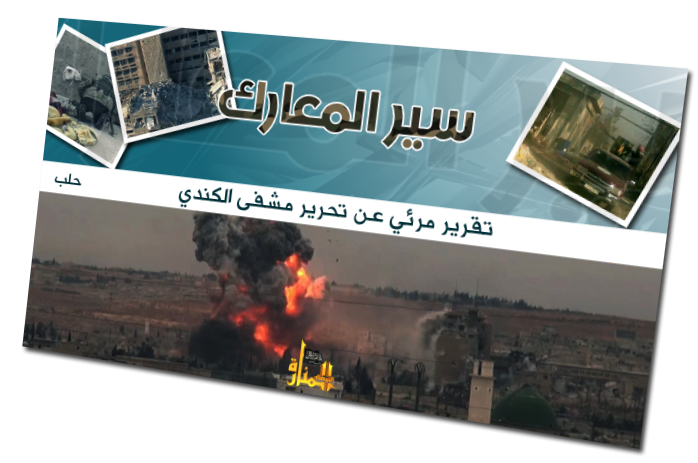
__________
To inquire about a translation for this video message for a fee email: [email protected]
Jihadology presents Academic Journal Articles of 2013, Part IV
For previous posts in this series see:
- 2010 End of the Year Series
- 2011 End of the Year Series
- 2012 End of the Year Series
- The Books of 2013
- Academic Journal Articles of 2013, Part I
- Academic Journal Articles of 2013, Part II
- Academic Journal Articles of 2013, Part III
–

Kathleen Deloughery — Simultaneous Attacks by Terrorist Organisations
Khalil al-Anani and Maszlee Malik — Pious Way to Politics: The Rise of Political Salafism in Post-Mubarak Egypt
Khuram Iqbal and Sara De Silva — Terrorist lifecycles: a case study of Tehrik-e-Taliban Pakistan
M.W. Zackie — An Analysis of Abu Mus’ab al-Suri’s “Call to Global Islamic Resistance”
Manuel Cebrian, Manuel R. Torres, Ramon Huerta, and James H. Fowler — Violent extremist group ecologies under stress
Marcus Schulzke — Being a terrorist: Video game simulations of the other side of the War on Terror
Marie Breen-Smyth — Theorising the “suspect community”: counterterrorism, security practices and the public imagination
Mark Woodward, Muhammad Sani Umar, Inayah Rohmaniyah, and Mariani Yahya — Salafi Violence and Sufi Tolerance? Rethinking Conventional Wisdom
Martijn de Koning — The moral maze: Dutch Salafis and the construction of a moral community of the faithful
Martin Rudner — Al Qaeda’s Twenty-Year Strategic Plan: The Current Phase of Global Terror
Mary Beth Altier, John Horgan, and Christian Thoroughgood — In Their Own Words? Methodological Considerations in the Analysis of Terrorist Autobiographies
Matthias Kortmann and Kerstin Rosenow-Williams — Islamic Umbrella Organizations and Contemporary Political Discourse on Islam in Germany
Matthew Feldman — Comparative Lone Wolf Terrorism: Toward a Heuristic Definition
Megan Smith and James Igoe Walsh — Do Drone Strikes Degrade Al Qaeda? Evidence From Propaganda Output
Mohammed Ilyas — Islamist groups in the UK and recruitment
Mohammad Shehzad — The State of Islamic Radicalism in Pakistan
Monica Marks — Youth Politics and Tunisian Salafism- Understanding the Jihadi Current
Moran Yarchi, Gadi Wolfsfeld, Tamir Sheafer, and Shaul R Shenhav — Promoting stories about terrorism to the international news media: A study of public diplomacy
Muniba Saleem and Craig A. Anderson — Arabs as terrorists- Effects of stereotypes within violent contexts on attitudes, perceptions, and affect
Nazek Jawad — Democracy in Modern Islamic Thought
‘Umar Studio presents a new statement from the Teḥrīk-ī-Ṭālibān Pākistān: "Documenting the Crimes of the Massacre in ‘Mir Ali’ Market and the Genocide North of Waziristan at the Hands of the Pakistani Military"
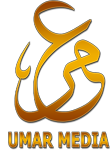
بسم الله الرحمن الرحيم
In the name of Allah, the Most Compassionate, the Most Merciful
In yet another wave of expanding America’s Crusader war in one of its ugliest forms in the tribal areas in north Waziristan, the apostate Pakistani army performed a severe, random bombing using heavy cannons and mortars as well as war planes and helicopters on the 19th of November 2013 in the area of Mir Ali, north Waziristan, that swarms with residents leading to the destruction of a market that had thousands of shops and houses and private possessions as well as the Masjid and the Madrasah, and the martyrdom and injury of thousands of innocent civilians
This random bombing that aims to destroy the area completely upon the unarmed residents, resulted in the martyrdom of two women and three children from the same family because of the rockets and grenades of the Pakistani army. In addition, 6 other civilians were martyred while performing the Fajr prayer in the Jami Masjid in the market. The grenade from the cannon of the Pakistani army fell on a Masjid resulting in the destruction of the Minbar of the Masjid, as well as a portion of it.
The following day, the news of the martyrdom of 42 civilians was confirmed as a result of the random bombing of the Pakistani army. However, the number of martyrs is far more than that, because several hundreds of victims still lie under the rubble, and the Pakistani army has imposed a strict curfew in the area to hide their ugly crimes against humanity, and no one is allowed to transfer the bodies of the martyrs under the rubble
This massacre victimized tens of children, women and the elderly and even animals that were not spared from the crimes of the cowardly Pakistani army that is incapable of anything except killing unarmed civilians with deceptive bombing.
The Pakistani forces were not satisfied with simply targeting the unarmed civilians and random bombings using heavy cannons, mortars and warplanes and helicopters. Instead, it did things uglier than that in ‘Dar al-Musafireen’. ‘Dar al-Musafireen’ is located at some distance from the market of Mir Ali, where the poor workers, most of whom come from the area of ‘Laki Maroot’ and work here at ‘Dar Ali’ with a daily wage to earn a living, reside. The Pakistani army attacked ‘Dar al-Musafireen’ at night and tied up 26 workers with ropes, and then shot them resulting in their martyrdom, all of them.
These hideous massacres of the Pakistani army show that this is a deliberate genocide of the residents of north Waziristan, which aims at killing them and driving them away from their lands, so that the Pakistani army can fulfill the dream of subjugating the tribal lands, a dream dreamt by their masters, the English, when the British forces raided the area during the time between 1860 and 1945.
And here we are documenting the new crimes of the Pakistani army with pictures so that it becomes clear for everyone that the Pakistani forces have reached such a level in the American Crusade against Islam and Muslims, whereby they have exceeded the Jews, Christians and Hindus in committing ugly crimes.
So, where are those who pretend to cry for humanity and human rights and animal rights, and why are they not protesting against the Pakistani Army?
And where are the media outlets and the TV channels, and why are they not covering these crimes of the Pakistani army and relaying the news minute by minute?
Where are those people who scream day and night upon the death of a vaccine employee, and why are they not raising their voices upon the death of hundreds of civilians in a clear genocide?
Where are those who have taken the enemy of Islam ‘Malala’ as a role model for themselves, and why are they not protesting the destruction of schools and targeting of education by the Pakistani army?
Where are those who raise the banners of Islam and peace against terrorism and corruption and against war crimes, and why are they quiet now?
Is their immoral silence because the one performing these crimes is the Pakistani army who is launching a war sponsored by America and Britain against Islam and Muslims, under the pretext of uprooting terrorism, and that is why, it is alright for them to do whatever crimes they want?
For us Allah sufficeth, and He is the best disposer of affairs, and Allah is the Greatest.
{But honour belongs to Allah and His Messenger, and to the Believers; but the Hypocrites know not.}
The Official Foundation for Production and Distribution
Umar Media Tehrik-i-Taliban Pakistan
Monday, Safr 20, 1435 A.H
23/12/2013 Don’t forget us in your prayers
Source: (Echo of Jihad Center for Media)
The Global Islamic Media Front
Observing Mujahideen News and Inspiring the Believers
_________
Jihadology presents Academic Journal Articles of 2013, Part III
For previous posts in this series see:
- 2010 End of the Year Series
- 2011 End of the Year Series
- 2012 End of the Year Series
- The Books of 2013
- Academic Journal Articles of 2013, Part I
- Academic Journal Articles of 2013, Part II
–

George Garner — Chechnya and Kashmir: The Jihadist Evolution of Nationalism to Jihad and Beyond
Husain Haqqani — Islamists and Democracy: Cautions from Pakistan
Husain Haqqani — Islamism and the Pakistani State
Imran Awan — Muslim Prisoners, Radicalization and Rehabilitation in British Prisons
Irene Oh — Muslim Governance and the Duty to Protect
James D. Jacquier — An operational code of terrorism- the political psychology of Ayman al-Zawahiri
Jessica Davis — Evolution of the Global Jihad – Female Suicide Bombers in Iraq
Joas Wagemakers — In Search of “Lions and Hawks”
Justin Conrad and Daniel Milton — Unpacking the Connection Between Terror and Islam
New statement from Jabhat al-Nuṣrah: "Storming and Liberating al-Kindī Hospital in Aleppo After Two Martyrdom Operations"
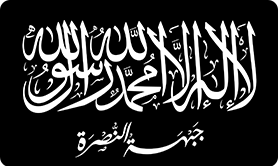
Click the following link for a safe PDF copy: Jabhat al-Nuṣrah — “Storming and Liberating al-Kindī Hospital in Aleppo After Two Martyrdom Operations”
__________
To inquire about a translation for this statement for a fee email: [email protected]
GUEST POST: Abdulhakim Mujahid Muhammad (Carlos Bledsoe): A Case Study in Lone Wolf Terrorism
NOTE: As with all guest posts, the opinions expressed below are those of the guest author and they do not necessarily represent the views of this blogs administrator and does not at all represent his employer at the Washington Institute for Near East Policy.
Jihadology.net aims to not only provide primary sources for researchers and occasional analysis of them, but also to allow other young and upcoming students as well as established academics or policy wonks to contribute original analysis on issues related to jihadism. If you would like to contribute a piece, please email your idea/post to azelin [at] jihadology [dot] net.
Click here to see an archive of all guest posts.
–
Abdulhakim Mujahid Muhammad (Carlos Bledsoe): A Case Study in Lone Wolf Terrorism
By Daveed Gartenstein-Ross
June 1, 2009 was a Monday. Shortly after 10:00 a.m., Private William Long, 24, and Private Quinton Ezeagwula, 18, stood outside the joint Army-Navy recruiting center in northwestern Little Rock, Arkansas, taking a smoke break. The two young men, who were working at their hometown recruiting center before moving on to their first duty station, spoke of where that first assignment would take them. Long said that he would be leaving for Korea the following Monday; Ezeagwula was bound for Hawaii a day earlier, on Sunday.
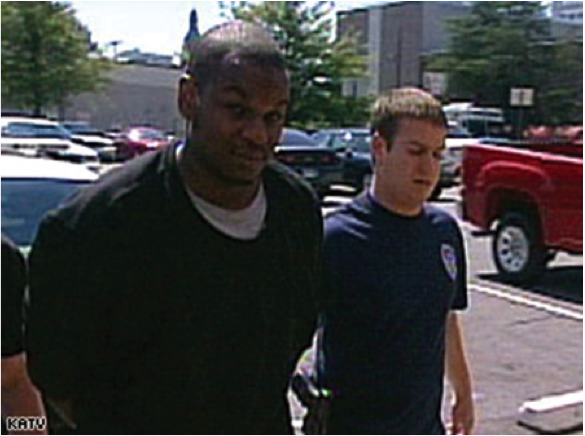
Figure 1: Abdulhakim Mujahid Muhammad at the time of his arrest.
As they made conversation, a black Ford Sport Trac sport utility vehicle pulled around from the commercial parking lot adjacent to the recruiting station, and the SUV’s window rolled down. Ezeagwula thought he heard the driver say something, so he turned and looked toward the driver, a black male in his mid-twenties.
Almost immediately, the driver—Abdulhakim Mujahid Muhammad, formerly known as Carlos Bledsoe—began firing at the soldiers with a SKS semi-automatic rifle. Long collapsed, and would be declared dead upon arrival at the hospital. Ezeagwula was hit in the back and torso, and dropped to his knees. He crawled back toward the recruiting station, seeking shelter from the gunfire. Muhammad continued shooting through the recruiting station’s window, hoping to hit the fifteen Army and civilian personnel inside. His SUV then drove off.
Though this initially appeared to be a routine drive-by shooting, Muhammad made his motivations clear after Little Rock police apprehended him. He said that he was a practicing Muslim, and was motivated to carry out the shooting by the injustices of U.S. foreign policy. It soon became obvious that the shooting had been an act of lone wolf jihadist terrorism.
This article examines the Muhammad case in detail. I conducted field research in Little Rock, Arkansas, in the summer of 2012. Before traveling there, I read all available court documents and media reporting related to Muhammad’s attack, making note of figures who seemingly had special insight into him and the attack, and interviewed Muhammad’s father (Melvin Bledsoe) by telephone. In Little Rock, I interviewed prosecutor Larry Jegley; Lt. Carl Minden of the Pulaski County detention facility; guards who worked at the facility during Muhammad’s incarceration; and Jim Hensley, an attorney who was part of the defense team. I also visited the detention facility, where I was given access to the administrative segregation wing where Muhammad had been held, and I was able to gain access to the files that the prosecution used in this case.
The article thus documents a great deal of information that has not been made public previously, including Muhammad’s violent tendencies prior to his conversion to Islam, the extent to which the FBI was aware of Muhammad before his attack, the manner in which he continued his jihad even while incarcerated (assaulting inmates and guards), and the fact that he was able to convert another inmate. The article also provides rich detail on the evolution of Muhammad’s religious ideology during his radicalization.
Muhammad’s Early Life and Conversion
Abdulhakim Mujahid Muhammad was born as Carlos Bledsoe on July 9, 1985, andgrew up in Memphis, Tennessee. His family operated a tour company, Twin CityTours, and Muhammad began to assist the family business when he was eight yearsold. He would interact enthusiastically with customers. ‘‘He grew up in the business,’’ Muhammad’s father, Melvin Bledsoe, told me. ‘‘He came to work in the summers,after school was out.’’
There are two different accounts of Muhammad’s upbringing. One is the family’s view that he was a typical American boy. Describing his son as a ‘‘fun kid,’’ Bledsoe explained:‘‘He loved to have fun, he was a practical joker, he loved high fashion clothes,rap music, girls. Typical young boy.’’ The family had a couple of dogs duringMuhammad’s youth: it had an American Eskimo until he was twelve, but after itwas killed by a neighbor’s dog, the family bought a golden retriever. The AmericanEskimo was one of the memories that neighbor Curnelia Crutchfield emphasized after news of Muhammad’s shooting became public, telling the media that he ‘‘seemed likehe was a good kid. He was a happy-go-lucky kid. I remember he had a white dogand they were the best of friends.’’
Muhammad graduated from high school in 2003, and went to college atTennessee State University in Nashville. He wanted to get a degree in business administration, and eventually run thefamily business. Melvin Bledsoe and his wife hoped their son could givethem an early retirement.
The other account of Muhammad’s upbringing, told by Muhammad himself, is significantly darker. Speaking to a psychologistwith the Arkansas Department of Human Services, Muhammadrecalled that he was suspended from school several times for fighting, and characterizedhimself as ‘‘a gang member.’’ Several people I interviewed were dismissive of the claim that he had been in a gang. However, records from the Shelby County, Tennessee Sheriff’s Office suggest that there may be merit to Muhammad’s claim. A police report from February 2002 describes an incident in which Muhammad was punched in the face by a man named Derrick Moore, who claimed Muhammad had threatened him. The report notes that Muhammad and Moore had in the past been ‘‘affiliated’’ with a gang called the Vice Lords.
Muhammad was involved in a couple of other violent incidents before leaving for college. In August 2002, he entered a barbershop and told a man named Derrick Cathey to step outside to fight. Cathey refused, and barbershop employees told Muhammad to leave. He later returned with two other men, and a knife was pulled during the course of the ensuing altercation. And in May 2003, another driver struck Muhammad’s car. Muhammad jumped out of his vehicle and started hitting the other driver’s rear passenger window with chrome-plated brass knuckles. Muhammad yelled, ‘‘Bitch I’m gonna kill you, get out, I’m going to kill you when I get your address.’’ Officers who arrived on the scene found the brass knuckles in Muhammad’s left rear pocket during a pat-down.
Of course, this involvement with violence as a teenager doesn’t mean Muhammad would inevitably have committed murder absent his encounters with Islamic extremism. His defense lawyer, Jim Hensley, told me that if Muhammad hadn’t been captured by this fringe ideology, ‘‘I don’t think he ever would have murdered anybody.’’ (Muhammad fired Hensley before trial, but Hensley continued to serve as an informal consultant to Muhammad’s father.) On the other hand, prosecutor Larry Jegley thought that Muhammad might have ended up a killer even without drifting into Islamic radicalism. ‘‘It’s possible,’’ Jegley said, that he might not have killed absent becoming radicalized. But on the other hand, ‘‘he also could have hooked up with the Crips or the Bloods.’’ Jegley noted, however, that Muhammad had every opportunity to not go down the wrong path, in that he was blessed with a father who had ‘‘pulled himself up by his bootstraps, worked hard, took chances, and was part of the American dream. His family members all wanted desperately for him to share in that.’’ Thus, Jegley said, ‘‘I’m not going to argue with anybody who says the radical Muslim stuff he was exposed to could have been an influence.’’
Though Muhammad had early brushes with the law, one particular 2004 incident, occurring in Knoxville, Tennessee, would indelibly change his life.
Around 9:00 p.m. on the evening of February 21, Knoxville police officer Michael Harper pulled over a blue Mazda. A man who had been in the car’s front seat fled, and the officer found Muhammad in the back. There were weapons in the car, including a SKS assault rifle and a single-shot shotgun, which Muhammad told the officer he had been trying to sell. A search accompanying the arrest turned up a bag of marijuana in Muhammad’s front left pants pocket, and he was charged with unlawful possession of a weapon and drug possession.
Muhammad could have faced up to fourteen years of imprisonment, which he said ‘‘spooked’’ him. The family hired a lawyer, who argued he was just a college student who was experimenting. The prosecutors gave Muhammad a plea deal that included a year’s probation, but one condition was that if he got into further criminal trouble, he would have to serve the full fourteen-year sentence.
The experience seemingly instilled in Muhammad the idea that he had to show he could do better. He became interested
Masāma' al-Khayr l-l-Inshād presents a new Nashīd from Abū Mālik al-Maqdisī: "Do Not Be Sad"

Abū Mālik al-Maqdisī — “Do Not Be Sad”
__________
To inquire about a translation for this nashīd for a fee email: [email protected]
